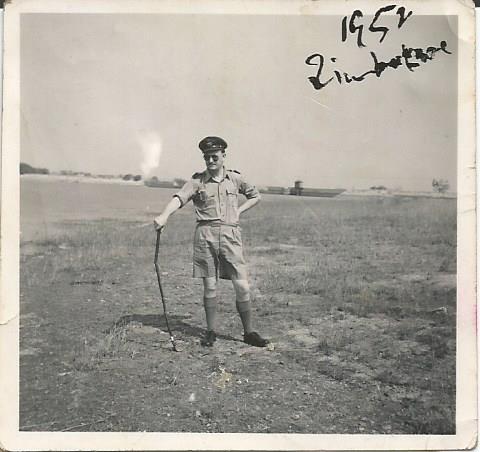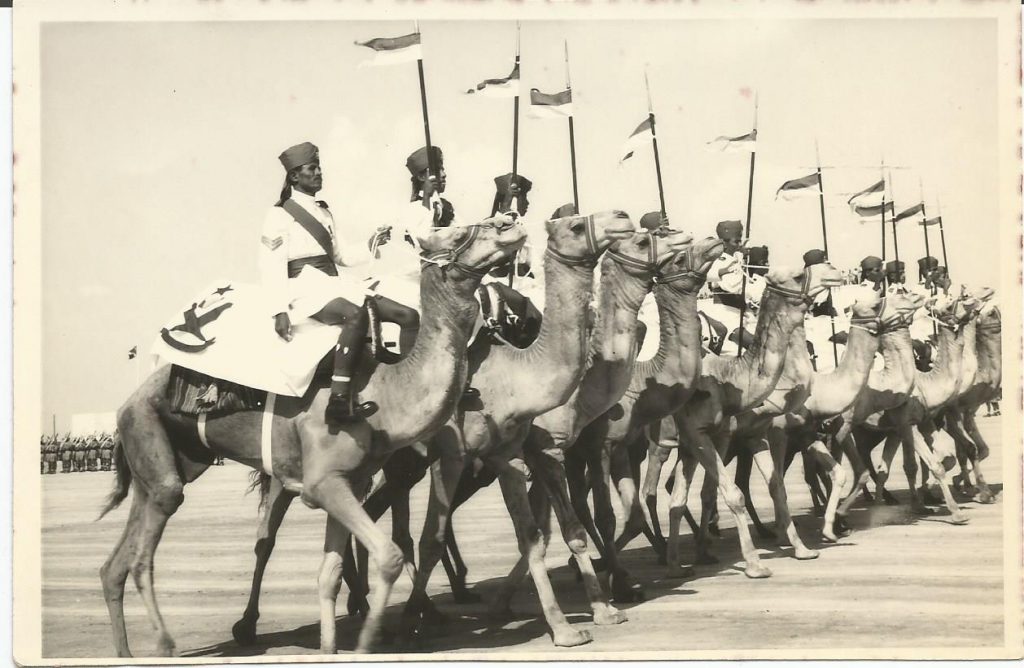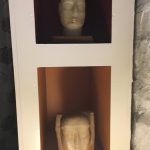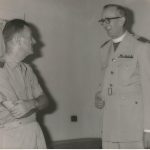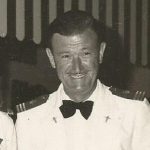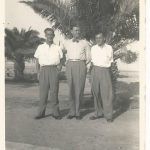Jim Henry - A lifetime's odyssey
RAF Career
Jim joined the RAF as a Squadron Leader just after the war. He served in parts of Africa and several places in the Middle East. When he retired in the 1970s, he’d reached the rank of Group Captain.
RAF Career
Active Service Abroad
Jim’s first posting abroad in the early fifties was to Bulawayo in Zimbabwe (Rhodesia as it was then). He learnt to fly in Africa in the early fifties, and on one occasion was a passenger in an air race; during a rest-stage, he met a friend from Mayo, of all places, and changed planes to return with him. It was a most fortunate change for him as the first plane crashed unfortunately.
From Bulawayo, he made trips to Pretoria, South Africa, and Tabora, Tanganiyika. Some of these visits were strictly sight-seeing, accompanying pilots but some were also to attend patients. Benghazi in Libya was a staging post en route to other parts of Africa and Arabia and was close enough to Tunis to visit Carthage on a lie-over.
Between 1963 and 66 when he was stationed in Aden, Jim and his wife visited several other countries courtesy of the RAF. He had a friend who lived in Kenya but who was working in Somalia. Unfortunately this friend’s baby girl became very ill, was dying in fact, and her parents couldn’t bear the thought of her being buried in Somalia. Jim and his friend brought the baby to Kenya but because of international flying regulations, if they wanted the child to be buried in Kenya, she would have to have died there, so Jim kept the little mite alive during the flight and the parents got their wish.
They were in Nairobi for Uhuru, Independence.
On another occasion, an Arab woman became dangerously ill in Aden. Khormaksar hospital did not have the equipment or personnel to save her life so it was decided to fly her immediately to London. Jim and a nurse accompanied the patient who fortunately made a complete recovery in a matter of days.
But Jim had got on the plane wearing his “Number 6s” ie lightweight uniform and shorts. It was winter in London. The nurse had a brother who lived in London and she said he was roughly the same size as Jim. The brother brought clothes so Jim could get out and about to buy some new ones.
While he was in Aden, Jim had to be lowered from a helicopter a few times to treat patients. On one of these call outs he was attending to a man on a ship who had taken ill suddenly.
Another happened in the desert, in the Radfan Valley, Yemen. He shared a meal with Yemeni tribesmen. His one and only medal dated from this time.
Another Arab, the Sheik of Beihan, was very grateful for his treatment of his wife and, in gratitude, invited him to his installation and then gave him two alabaster Hittite heads originally from Timna. Some years later Jim brought these to the Ulster Museum in Belfast, wishing to present them to the curator. Whoever greeted him, went mad when he saw the heads; he must have thought Jim had stolen them or something, but he scolded him without giving him a chance to explain, with the result that Jim said not a word but turned on his heel and brought them home again.
